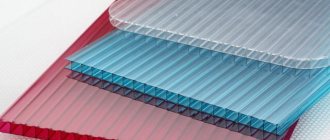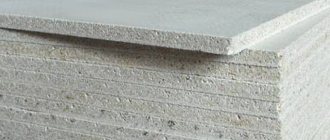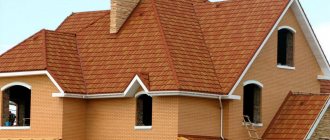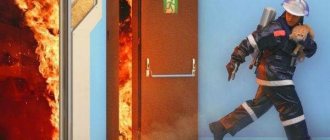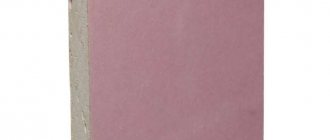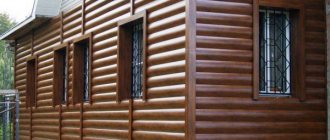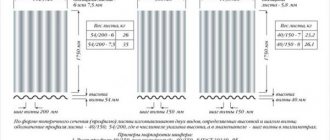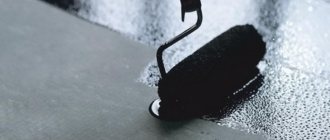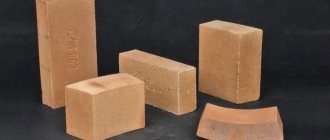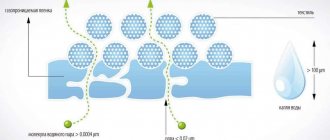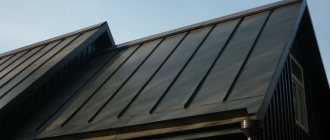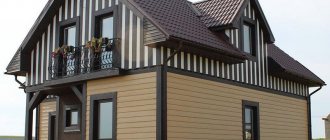What is metal tile? This is a sheet roofing material made of galvanized steel that accurately imitates ordinary tiles. A roof covered with metal tiles looks elegant and impressive, and installation is carried out with minimal effort and financial costs. Thanks to these features, the material is very popular in Europe, Russia and the CIS countries.
However, the range of metal tiles is quite diverse, so choosing the optimal type of roof can be difficult. Let's consider the main characteristics and requirements for this material in order to know how to choose it correctly.
What's inside? Composition and structure of roofing sheets
Metal tiles have a multilayer structure. The base is usually taken from a sheet of metal made using cold rolling technology. Then the finished profile is subjected to stepwise processing. In particular:
- A layer of phosphate is applied to prevent corrosion.
- Priming is carried out in order to increase the adhesion of the metal to the finishing coating.
- A polymer coating of various colors is applied to the front surface.
- The back side of the sheet is treated with a protective varnish.
As a result, metal tiles have the same composition, regardless of the manufacturer, however, roofing characteristics and quality may vary.
Read about composite tiles, a close relative of the subject of our conversation here >>>
Wave height and pitch
When it comes to the size of metal roofing tiles, such an important parameter as the height of the waves and the distance between them is important.
In different brands of material from different manufacturers, the height of metal roofing tiles can vary between 12-80 mm.
There are three groups of products according to this parameter:
- Wave height of metal tiles – 12-28 mm – economy class.
- A profile with a height of 30-50 mm is a middle class product.
- Waves with a height of 30-50 mm are for elite class products.
Please note that roofing material with a profile height of more than 50 mm is considered the most reliable and durable - it allows a large flow of water to be drained from the roof during heavy winds with rain. In addition, this coating looks very impressive.
By wave pitch we mean the distance at which two adjacent top points of the profile are located. A pitch of 183-185 mm is considered acceptable. Products with such parameters are able to withstand standard wind and snow loads well, and can also withstand the weight of a person moving on the surface during roof repair or maintenance.
Materials with longer pitches are less rigid. In addition, this shape shortens the working surface of the metal tile sheet, which can lead to additional costs if short sheets of material are used.
It is worth noting that it is extremely important to check the quality of stamping of profile sheets before purchasing. If the waves fit tightly to each other, then the roof will be of high quality. A loose fit may be due to the purchase of materials from different manufacturers, as well as the use of outdated equipment. Such material will not be able to reliably protect the roof.
What types of metal tiles are there? Available types of roofing materials
Profile types
All metal tiles available on the market differ in the type of profile, which gives the roof a unique pattern. The following options are in high demand on the Russian construction market:
"Monterrey"
This is a rigid profile that accurately imitates ceramic tiles. Profiles of this type are characterized by a length of 1,100 mm , 6 waves with a pitch of 350 millimeters . The height of the profiling can increase or decrease, affecting the rigidity of the structure. The use of such metal tiles gives the building a classic look of modern architecture.
"Cascade"
It is characterized by strict geometry and rectangular shapes. If you order metal tiles of this profile in brown, the roof will resemble a chocolate bar. The width of such sheets is 1,120 millimeters , the structure is 5 waves of 224 mm , the height of the steps is 22.5 mm . The advantages of the profile are the minimum number of joints, which ensures material savings. Thanks to its strict shapes, the profile is suitable for residential and commercial development.
"Joker"
The profile of the metal tile is reminiscent of the popular “Monterrey”, with a more “lush” geometry. With standard sheet sizes, the wave height is 49 mm ; accordingly, in low-rise construction conditions, a roof made from such a profile will look more attractive.
"Athena"
Quite an original profile, where a wave-like structure alternates with a flat base. Such metal tiles fit organically into any architectural style, therefore they are often used for the reconstruction of buildings.
In addition to the usual types of metal tiles, new models with original designs are appearing on the market. For example: “Bongo”, “Andalusia”, “Shanghai”. The sheets attract attention with a relief pattern (wave height up to 66 mm ) and Z-shaped locking connections, which ensures installation without the use of external fasteners.
Types of metal profiles from Finnish colleagues
Metal tile sheet base materials
The types of metal tiles on the market usually differ in the type of profile. However, this is not the only distinguishing feature. A different base is used for manufacturing, which largely determines the characteristics of the roof. For example:
- Steel . This is the most common type of metal tile on the domestic market. The base material is usually coated with a layer of zinc to improve the roof's durability and corrosion resistance.
- Aluminum . This profile is less common, but has a number of undeniable advantages. In particular, aluminum is neutral to any external influences and therefore does not require additional processing. In addition, the material is quite light, which reduces the load on the foundation and supporting structures; installation does not require durable sheathing. The disadvantages of aluminum metal tiles include a very meager palette of colors and high cost.
- Copper . This is an initially expensive material that is rarely used in private construction. Copper metal tiles look impressive and pretentious, especially when covered with a greenish coating. The material does not require additional protection against corrosion, however, it is mainly used for the reconstruction of architectural and antique monuments.
It is worth noting that the most common and practical is galvanized steel metal tiles, which we will consider in the future.
Sheet length: which one to choose
Many people believe that if tiles are produced up to 8 meters long, then you need to buy solid sheets for your roof. The motivation is the absence of horizontal joints, which is supposedly better for maintaining the tightness of the roof, as well as the fast installation speed.
But experts say: this opinion is wrong. A long sheet is more difficult to pack, transport and carry, and installation can only be done by experienced installers.
Metal tiles are a flexible material. With large deflections of the sheet, deformations and changes in shape occur due to stretching of individual sections. As a result, there is a discrepancy in the installation of longitudinal locks. The edges diverge and do not adhere tightly to each other. This is not only noticeable, but also impairs the protective functions of the roof. You have to additionally nail down the edges of the metal tiles so that there are no gaps left.
Delivery of sheets longer than 4 m is a separate issue. It is much cheaper and easier to find transport for shorter items. In addition, carrying a sheet 6-8 m long is not the same as 3-4 m.
Therefore, it is recommended to order materials no more than 4 m. By the way, information for those who are afraid of horizontal joints - during installation they are closed from above with a floating lock and become completely invisible.
Pros and cons to keep in mind
Like any building material, metal tiles have their advantages and disadvantages. The strengths of the roof include the following:
- Durability. Without losing its properties and technical characteristics, a metal roof can last more than 50 years .
- Resistance to temperature changes. The application range varies within -50/+70 degrees , which ensures the possibility of application in any region of the country.
- Diversity. Despite the identical manufacturing technology, the material boasts different shapes and colors.
- High strength. The width of the sheet allows you to minimize the number of joints. In addition, the sheets are usually laid overlapping, which significantly increases the tightness of the roof.
- Easy to install. Metal tiles can be laid on an old roof, which significantly increases the speed of work. For example, a team of specialists can install about 100 m2 .
Significant disadvantages include the following:
- Restriction on roof slope angles. In order for metal tiles to fully cope with their tasks, the slope angle must exceed 14 degrees .
- Not suitable for roofs with complex geometries. During installation, you will have to adjust the wave and pattern, which increases the amount of production waste - up to 30% of the total amount.
- Relief structure. The wavy structure of the sheet can prevent the natural rolling of snow from the roof.
- Low sound insulation. To solve the problem, it is necessary to lay an additional layer of insulation.
Another disadvantage can be considered low resistance to mechanical damage. Banal hail damages the polymer protective coating, which provokes the formation of corrosion and reduces service life.
Polymer coatings used to protect metal tiles
It is the protective layer that determines how long a metal tile roof will last. Until relatively recently, domestic tiles were not in demand. The thing is that it was believed that high-quality polymer coating could only be applied abroad, using complex specialized equipment that did not exist in our country.
But in recent years the situation has changed dramatically for the better.
Russian companies, such as Metal Profile, Interprofile and many others, have provided the market with a huge amount of metal tiles, which are not inferior in quality to the most modern foreign models, but are much cheaper.
To cover metal tiles, there are a huge number of types of coatings that use various polymers. Some of them are particularly resistant to temperature changes, some perfectly protect against ultraviolet radiation and prevent the tiles from fading, and some are characterized by increased ductility and high strength. In addition, the rich range of colors of coatings makes the roof simply beautiful and aesthetically attractive.
Let's look at several types of coatings.
Polyester "Shiny"
This type of polyester requires especially careful handling. Despite this, it is precisely this that serves to protect 70% of all metal tiles produced today. Having an inexpensive cost, polyester does not always successfully cope with the aggressive influence of the environment. At the same time, the coating is quite easily damaged by mechanical stress and does not tolerate low temperatures.
But at temperatures from +0 to + 90 degrees, the coating perfectly protects the tiles from atmospheric influences.
Typically, the material is applied up to 25 microns thick and the service life of tiles with such a coating is 5-10 years.
It is marked with the letters RE.
Polyester “Noble matte”
This is a type of polyester that contains Teflon. It is this that gives polyester a completely different appearance. Teflon makes the material more resistant to external influences and increases the service life of the tiles up to 15 years.
In addition, metal tiles lose their shine and become more matte.
“Noble matte” is applied with a layer up to 35 microns thick and marked – MPE (but there may be other similar markings).
The temperature regime for “Noble Matte” is the same as for “Brilliant”.
"Pural"
This coating is made from polyurethane. The Pural coating is highly durable, resistant to ultraviolet radiation and aggressive environments, and has a huge temperature resistance range from -60 to +100 degrees Celsius.
Perfectly retains moisture and protects tiles from corrosion.
Service life is on average 30 years, coating thickness is 50 microns.
But it is necessary to take into account that the cost of such tiles is much higher than that of tiles coated with polyester.
"Pural" matte
Apart from the matte texture, this coating has no differences in characteristics from Pural.
"Purex"
Metal tiles with this coating are manufactured in Finland, have high ductility, and excellent aesthetic characteristics. It is practically not subject to corrosion and is resistant to mechanical damage, the warranty period is up to 50 years.
Prisma polyurethane coating
The basis of this coating is polyurethane with the addition of a special alloy Galvalloy, consisting of 94% aluminum and 6% zinc. The sheet is resistant to corrosion and mechanical damage, service life is 15 years.
PVC coating – “Plastisol”
Externally, this coating resembles birch bark or rough leather. The application layer is up to 200 microns (very thick). Metal tiles with such a coating are perfect for installing roofs in utility rooms and gutters. The temperature limit is small: from +10 to +60 degrees.
PVDF coating
Metal tiles with such a coating look very stylish and attractive. The coating does an excellent job of protecting metal tiles from corrosion, temperature changes and other weather surprises. Coating thickness up to 25 microns.
Composite coating “Kami TerraPLEGEL”
A coating consisting of two layers of polymer, quartz sand and a top layer of polyester. Due to the presence of quartz sand, it is resistant to mechanical damage and has a rough surface that successfully imitates the texture of natural tiles. In addition, this metal tile perfectly insulates sounds, which is important for this material.
Solano coating
This coating has an unusual texture with embossing, its thickness is up to 200 microns. The sheet is resistant to mechanical damage and has excellent anti-corrosion properties. Service life is 50 years.
Metal roofs are a coating for the near future. The roofing material is superior to most materials competing with metal tiles in terms of ergonomic, economic and performance indicators.
Specifications
It should be noted that metal tiles are manufactured in accordance with current GOST standards. This roofing material is characterized by the following technical parameters:
- Tensile strength – 300-490 MPa .
- Resistance to dynamic loads – 250 kg/m2 .
- Service life is 20-50 years , depending on the thickness and type of polymer coating.
- Frost resistance - average: 200 freezing cycles.
- Fire safety - steel does not burn, melting point is 1,500 degrees .
- Environmental safety - the profile material and polymer coating are non-toxic and therefore do not pose a threat to health and life.
It is worth noting that metal tiles tend to accumulate static electricity, so for such a roof the installation of a lightning rod is a prerequisite.
Table of characteristics depending on the type of coating
| Characteristics | Polyester | Matte polyester | Pural | Plastisol |
| Type of coverage | smooth | matte | silky matte | "stroke", "skin" |
| Coating thickness | 27 | 35 | 50 | 200 |
| Maximum operating temperature | 120 | 120 | 120 | 60 |
| Mechanical stability | 3 | 3 | 4 | 5 |
| Corrosion resistance | 4 | 4 | 5 | 5 |
| UV resistance | 5 | 5 | 5 | 4 |
Options for selecting metal tile sizes
There are two approaches to choosing the sizes of roofing elements.
1. In the first case, sheets of standard dimensions are used. Leading manufacturers produce metal tiles of different sizes, which makes it possible to select with a high degree of accuracy the required number of parts for roofs of any size and design. An experienced craftsman prefers an option with a minimum number of joints without unnecessary cutting and unused leftovers.
2. The second case involves preliminary interaction between the consumer and the manufacturer. Based on design drawings or roof measurements, the required quantity and geometric dimensions of roofing material are calculated. Ideally, the sheets are cut at the factory to the length of the roof slopes, taking into account the side overhang. The customer only has to correctly install the ready-made kit received by him.
Roofing sheet dimensions
When manufacturing metal tiles, manufacturers try to adhere to standard sizes. It looks like this:
- Width: 1,160-1,180 mm .
- Length: 0.5-9 m .
- Thickness: 0.4-0.6 mm .
- Wave pitch: 350 mm .
The profile height varies between 39-46 mm , depending on the manufacturer. It should be clarified that the sheet width is divided into actual and useful, both parameters are indicated on the packaging. Considering that the sheets are laid overlapping, the usable width is usually 1,100 mm .
Table with the main sizes of some manufacturers
| Company manufacturer | Profile name | Full sheet width, mm | Useful sheet width, mm | Roll height, mm | Profile height, mm | Wave pitch, mm | Wave width, mm |
| Poimukate(Finland) | Tiilipoimu (TP) | 1180 | 1100 | 18 | 44 | 350 | 183,3 |
| Kruunukate (KR) | 1120 | 1040 | 22 | 64 | 400 | 206 | |
| Pelty ja Rauta(Finland) | PELTITIIILI | 1190 | 1100 | 25 | 38 | 350 | 183,3 |
| Mera System(Sweden) | ANNA | 1140 | 1050 | 15 | 30 | 350 | 175 |
| EVA | 1160 | 1100 | 15 | 25 | 350 | 183,3 | |
| BEAVER | 1226 | 1140 | 15 | 20 | 145 | 145 | |
| RoofLine(Russia) | RoofLine | 1190 | 1120 | 20 | 22 | 350 | 183,5 |
| Grand Line(Russia) | Monterrey | 1190 | 1100 | 18 | 23 | 350 | 183,5 |
| Country | 1188 | 1120 | 20 | 27 | 350 | 183,5 | |
| Metal Profile (Russia) | Monterrey | 1180 | 1100 | 14 | 25 | 350 | 183,5 |
| Supermonterrey | 1180 | 1100 | 21 | 46 | 350 | 183,5 | |
| Maxi | 1180 | 1100 | 21 | 46 | 400 | 183,5 | |
| Cascade | 1115 | 1050 | 22,5 | 25 | 350 | 224 | |
| MaxiCascade | 1175 | 1120 | 22,5 | 25 | 400 | 224 | |
| Blachy Pruszynski(Poland) | SZAFIR 350/15 | 1180 | 1100 | 15 | 40 | 350 | 184 |
| SZAFIR 400/20 | 1180 | 1100 | 20 | 45 | 400 | 184 | |
| KRON 350/15 | 1180 | 1100 | 15 | 45 | 350 | 275 | |
| KRON 350/20 | 1180 | 1100 | 20 | 30 | 350 | 275 | |
| KRON 400/20 | 1180 | 1100 | 20 | 30 | 400 | 275 | |
| Blachotrapez(Poland) | TAKOTTA | 1190 | 1100 | 25 | 38 | 350 | 183,3 |
| TACOTT S | 1150 | 1100 | 24 | 40 | 350 | 183,3 | |
| Blachotrapez(Poland) | Diament ECO | 1200 | 1120 | 21 | 36 | 350-450 | — |
| Diament PLUS | 1150 | 1045 | 20 | 54 | 350 | — | |
| Joker | 1210 | 1150 | 21 | 40 | 400 | — | |
| Kingas | 1195 | 1100 | 20 | 43 | 350-400 | — | |
| Kingas ECO plus | 1195 | 1120 | 21 | 42 | 400 | — |
Manufacturers and prices
Today there are no problems with purchasing metal profile sheets. This material is very popular, so there are a sufficient number of manufacturers, among which are the following:
- Grand Line – price 250 rubles per m2;
- Stynergy – price 320 rubles per m2;
- Finish Profiles – price 260 rubles per m2;
- Poimukate – price 350 rubles per m2;
- Interprofile – price 240 rubles per m2;
- Mera System Anna – price 330 rubles per m2;
- Mera System Eva – price 290 rubles per m2;
- Pelti ja Rauta – price 270 rubles per m2;
- Weckman - price 240 rubles per m2.
Metal tiles are the most popular material for roofing. When purchasing a profile, it is important to consider its dimensions. Properly selected dimensions will facilitate not only the transportation process, but also installation. In addition, knowing the exact dimensions of the sheet, you can accurately determine the required amount of material so as not to spend extra money on purchasing an unnecessary profile.
Weight of metal tiles per 1m2
This parameter is usually indicated on the packaging and directly depends on the thickness and size of the sheet. Depending on the material used, weight indicators may vary. For example:
- Galvanized steel – 3.8 kg .
- Aluminum – 1.34-1.36 kg .
- Copper – 4.45 kg .
The data is valid for standard sizes with a sheet thickness of 0.5 mm . Weight is indicated per 1 m2 . It is worth clarifying that the weight of a metal tile sheet can be influenced by the profile height and the thickness of the polymer coating.
Metal tile sheet thickness
When they talk about the thickness of a metal tile, they mean the thickness of the metal sheet from which it is made. But if the length and width are indicators that are taken into account exclusively when installing the roof, then thickness is an operational characteristic.
It is the thickness that determines the strength of the coating, its service life, and the ability of the roof to resist external loads.
On average, the thickness of a standard galvanized steel sheet, from which metal tiles are usually made, is 0.5 mm with a tolerance of 0.1 mm on both sides. Some manufacturers use thinner or thicker steel sheets. But this happens quite rarely.
When choosing a roofing material, it is necessary to take into account that:
- If the thickness of the metal tile is less than 0.4 mm, then the sheet is prone to severe deformation during transportation, storage, and laying the sheet on the roof. A sheet made of thin steel is much more susceptible to corrosion processes and its service life is much shorter than the service life of materials made from thicker sheets. And if at the same time the manufacturer saved on the coating, then such a roof will have to be changed very soon.
- If the metal tile is made from a standard sheet with a thickness of 0.45 to 0.6 mm, with a high-quality anti-corrosion coating, then such a roof will serve the owner for at least 10-15 years. Sheets of this particular thickness are most optimal for roofing work on private households in terms of price-quality parameters.
- Made from thick metal, metal tiles, of course, have higher strength characteristics. But it has much more weight and requires a much stronger system of load-bearing walls and ceilings. At the same time, metal tiles with a thickness of 0.7 mm or more are significantly more expensive. And due to its significantly greater weight, it is much more difficult to install, requires more fasteners and much more labor. Which, naturally, leads to a noticeable increase in the cost of roofing.
In fact, the thickness of a metal tile sheet is always slightly greater than the thickness of the sheet from which it is made.
This occurs due to the anti-corrosion decorative coating.
It should be remembered that the thicker the protective layer and the better quality it is applied, the more durable the roof will be. But the better the quality of the coating layer and the more resistant it is to mechanical damage, the more expensive the metal tile will cost.
What's better? Brief comparative analysis
There are several types of roofing materials on the construction market, so buyers are often concerned with the question: “Which type to choose?” Let's consider a comparison of metal tiles with the most competitive types of roofing.
Metal tiles or corrugated sheets
These are very similar materials, made of galvanized steel with a polymer coating, but differing in technical characteristics. In particular:
- Thickness. Corrugated sheeting looks more solid: 1.2 mm versus 0.6 for metal tiles at maximum values.
- Weight. The thickness of the material increases its weight; therefore, installation of corrugated sheets requires a more durable base.
- Appearance. Metal tiles look more textured, so roofing made from this material looks much more interesting.
In terms of sound insulation and durability, both materials are identical, but corrugated sheeting wins in terms of price. Therefore, if reliability and simplicity are important, it is undoubtedly better to use corrugated sheeting, beautiful roof design and exquisite design - definitely metal tiles.
Metal tiles or Ondulin
Ondulin is a soft roof that is manufactured using the same technology and has standard sizes, regardless of the manufacturer.
Ondulin is much lighter than metal tiles, which simplifies the installation process. However, metal tiles look stronger, do not burn, but lose in terms of sound insulation. It is worth noting that ondulin is more expensive and cannot boast of a varied color palette. Therefore, when choosing roofing material for a private house, preference should be given to metal tiles; if we are talking about a small building (bathhouse, garage, veranda), it is better to use ondulin.
Metal tiles or slate
The first option undoubtedly wins here. Metal tiles do not require durable sheathing, are resistant to direct exposure to ultraviolet radiation, and are not afraid of moisture. However, slate has better sound insulation and attracts buyers at an affordable price.
Width: how to take into account overlap when calculating the number of sheets
Since the elements overlap each other during installation, the actual width of the metal tile sheet is reduced by the amount of overlap. When calculating the roofing material, it is the usable width that is taken into account, so the manufacturer provides information about it in the technical documentation.
To calculate the required number of sheets, you need to know the width of the slope (the distance between the outer rafters plus the gable overhang) and, if there are several rows, its length.
Then:
N= W slope / W slave. sheet rounded up. If the roof is pitched, the amount for each slope is calculated separately. Until the exact number of sheets has been established, it is not recommended to saw off the edges of the sheathing.
How to calculate the amount of material for a roof
The calculations can be done independently, without resorting to complex mathematical formulas. To do this, you need to calculate the length of the ridge and roof slopes. Let's consider the calculation of the roof for a typical house with a gable roof, where the length of the ridge is 9.5 m , the length of the slopes is 6 m . The following formula applies here:
- Divide the length of the ridge by the useful width of the sheet ( 1.1 m ). The result is 8.6 sheets . We round the resulting value to a whole number and get 9 sheets .
- The length of the slope is calculated by the wave step. Regardless of the manufacturer, this value is always 350 mm . 17.14 waves to cover one side .
Standard sheets are characterized by a structure of 10, 6, 3 and 1 wave. Therefore, the amount of material is determined based on these features.
Lenght and width
When choosing the size of metal tiles for a roof, length and width are the first things you pay attention to. They are the ones who most influence the usable area of metal sheets.
According to GOST, the length can be from 50 to 900 cm. However, products of long length are rarely used directly in construction; they are purchased for cutting sheets of the required length. Based on their length, metal tiles are classified into the following groups:
- ultra-small – 50 cm;
- small – 120 cm;
- average – 225 cm;
- large – 360 cm;
- extra large – 450 cm.
Almost all roofing products offered on the building materials market today have a length approximately equal to the above figures. It may vary slightly among different manufacturers (in the range of plus/minus 3 cm). Also, a number of companies selling metal tiles offer the service of cutting sheets of a certain length required by a specific customer. Experts believe that the optimal solution in terms of efficiency and labor costs for transportation, storage and installation is the use of sheets 4 meters long.
Unacceptable range of metal tile sizes Source obustroeno.com
See also: /brands/remont-krovli/
The total width of the metal roof tile is from 116 to 119 cm, while the working width of the metal roof tile is 110 cm. Such a small variation in the width of the sheets is due to the manufacturing features of the profiled product. The sheets are produced at rolling mills, which in turn have standard roll sizes.
Colors available to the consumer
The available colors depend on the specific manufacturer and, as a rule, the choice ranges from 5-10 options to 50 different colors and shades. To ensure that the manager understands you correctly, remember the code of the desired color from the RAL table.
Popular options according to RAL scale
At the end of the article there are photos of what the material looks like directly on the roof.
Additional elements for pitched roofs
To increase the tightness and reliability of the roof, additional elements will be required. The following products are used for metal tiles:
- Covers.
- Eaves parts of the roof.
- Design for the ridge part of the roof.
- Elements for internal corners.
- Wind bars.
- Adjacent planks.
- Passage nodes.
In addition, elements can be installed to improve roof safety: fences, stairs, walkways. Next, using convenient diagrams, we will consider the main stages of work.
His Majesty Montage. Meet us!
Before installing a metal tile roof, you should install the rafter system and sheathing. For rafters, it is enough to use an edged board with a cross-section of 150X50 mm , treated with an antiseptic.
First, you should complete the installation of all pipes and ventilation ducts, and only then begin the installation of the roof.
The pitch of the rafters for a metal tile roof is assumed to be 600-900 mm ; usually, when installing wooden floor beams, it is equal to the pitch of these beams.
Lathing. Preparing a wooden base for the roof deck
The lathing can be made either continuous or sparse. The solid one is made from edged boards, plywood, and chipboard sheets. The distance (step) of the sheathing is set based on the step of the transverse wave.
When constructing sheathing from unedged boards, it is necessary to carefully remove the bark even before antiseptic treatment.
A vapor barrier material is first installed along the rafters to prevent condensation from getting on the surface of the attic insulation or on the roof insulation (if, of course, a warm roof is used).
We don't need condensation. Laying vapor barrier
We recommend reading about Izospan if you are not yet familiar with this material.
Installation of cornice strips
The next step is to install the eaves strip along with the gutter hooks. The plank is mounted with an overlap of 100-150 mm and secured with self-tapping screws.
How to lift material onto the roof without damaging it
The lifting of sheets is carried out in the old, and most likely already familiar to many, old-fashioned way.
Direction and layout of roofing sheets
Installation direction depending on roof type.
Installation of metal tile sheets can be done on any side of the building, but you should immediately take into account the overhang of the material of 40-50 mm above the eaves.
When installing a metal tile roof, you should step on the surface only between the waves of the material (see the figure above), shoes should be used with soft soles.
How to properly fix metal tile sheets
The sheets are fastened with special self-tapping screws with spacers; they can be matched to the color of the sheets.
At least eight self-tapping screws are required for 1 sq.m
The overlap of the tile sheets is one wave in the horizontal direction, and in the vertical direction the sheets of material must be matched to the entire length of the roof slope.
Upon completion of installation of all sheets, the ridge is installed. There is nothing complicated about this; you can choose a metal skate of the desired color for sale. The ridge is attached with nails or self-tapping screws to the sheathing boards; the ends of the ridge are closed with special plugs.
Install thoroughly. The service life of a metal tile roof is at least 50 years!
It is recommended to clean the roof from dirt annually using soft brushes.
overlap
To prevent leaks from rain or snow, sheets of metal tiles are laid on the roof, not edge-to-edge, but overlapping. If you subtract the overlap, you can determine the usable area of the sheet on a metal base. The total overlap in the longitudinal direction is usually from 10 to 15 centimeters; in width it reduces the width of the sheet to 110 centimeters.
The overlap of sheets directly affects the useful (working) area of sheets of roofing material Source spb-artstroy.ru
Which brand is better to choose? Trusted manufacturers
If we talk about manufacturers, we can highlight the following brands:
- Finnish metal tiles are presented on the Russian market by the company RUUKKI . This is one of the leading European manufacturers offering the Monterrey profile with Purex polymer coating.
- GRAND LINE . A Russian enterprise engaged in the production of metal tiles in accordance with the latest developments in this area. The model range is represented by “Monterrey” and “Country” profiles, coated with Polyester and SOLANO.
- MERA SYSTEM . A Swedish company that produces metal tiles made of galvanized steel with a sheet thickness of 0.45 mm. The company's products are resistant to sudden temperature changes and are available in a variety of colors.
Of course, there are many more manufacturers of metal tiles, but here are companies that have been operating on the Russian market for a long time and have earned the trust of customers.
Does the shape of the profile affect the quality of metal tiles?
The shape of the profile and its size of metal roof tiles affect the quality of the material. This is due to the fact that this roofing is made from ready-made and already painted galvanized steel sheets. When forming a profile by bending, the material at the bend is stretched and the paint coating becomes thinner. For this reason, the presence of steps and high angle bends definitely affect the durability of the metal profile.
To prevent such an outcome, it is necessary:
- For the manufacture of metal tiles, use sheets that meet the standards for the thickness of the protective polymer coating;
- Use modern technological equipment to form profiles;
- Carry out quality control of each sheet after bending.
In the artisanal production of cheap roofing tiles, it is not always possible to achieve high quality. Therefore, when purchasing inexpensive products with high step heights, a profile that has an angular shape, a large radius of the sole and waves, you should be careful. It is even better to refuse such a purchase in favor of products from proven and reputable manufacturing companies.
